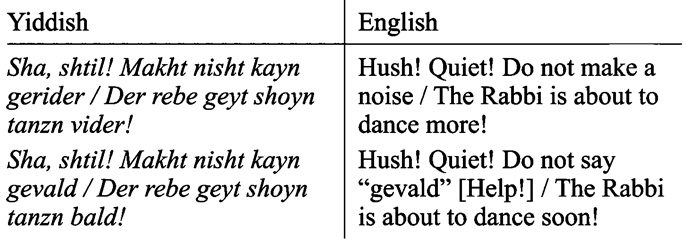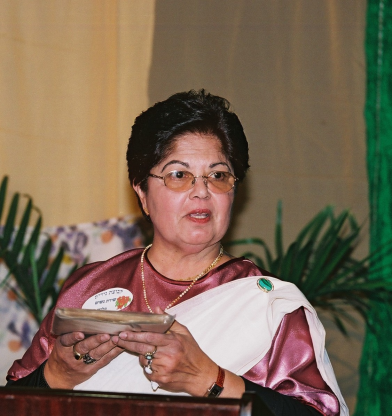
This is one of the best-known Yiddish songs with anti-Hassidic overtones (see Mlotek 1989: 146-147). It is set to a short archetypal dance tune consisting of one period only. Stutschevsky’s arrangement transmits the humorous character of the original song that contrasts with the mood of the opening lullaby and with the atmosphere of the next piece, the slower El Yivneh Hagalil.
The sparse piano accompaniment has a rather percussive character that supports and even reinforces the melodic line with punctuated chords. It accentuates the hopping dance with its short eighth-note chords and the persistent ostinato of an octave on the tonic A in the left hand. For this reason, Engel found this piece’s arrangement slightly under-developed compared to the rest.
An idiosyncratic feature of the harmony in this piece is Stutschewsky’s major-minor contrast in the cadence on the second inversion IV (D) on bars 5 and 15. The doubling of the melody’s sixteen notes in bars 9, 19, 20 stands out.
Here, too, from a pedagogic point of view the melodic instrument moves mostly in steps, allowing the player to get the freygish mode “under her fingers.”





